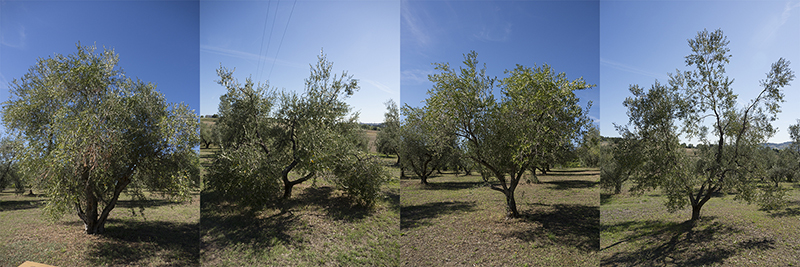Let’s learn about the varieties of olive trees from which Olio Poldo oils are produced.
As we know, oil is the product of olives pressing. Depending on the variety of plants we will have different oil varieties.
Olive tree is a predominantly allogamous, this means that pollination is from the outside. As a result, genetic blending may be very high.
In Italy genetic heritage reaches a considerable variety, in fact you can count up to 538 varieties of olive, about the 42% of worldwide patrimony.
Each geographic area has its own varieties, which can be diversified even within a few kilometers. In particular we will illustrate the Marche varieties, both oil and canteen.
MARCHE OIL VARIETIES
CARBONCELLA is typical of Ascoli Piceno and Macerata. It produces a round, dark purple color fruit.
CORONCINA is widespread in the province of Macerata, particularly in the municipalities of Caldarola and Serrapetrona. It produces an excellent quality oil, very fruity, bitter and sharp with a high content of polyphenols. It’s pollinated by varieties such as Mogliano, Pendolino and Maurino’s Piantone.
MIGNOLA is widespread in the provinces of Ascoli Piceno, Macerata and Ancona. The fruit is pointed, produces a bitter-flavored oil rich of polyphenols.
ORBETANA is widespread especially in the Macerata area. The fruit is fairly large, the color goes from intense green to glossy black. The oil is fruity, harmonious bitter and biting.
PIANTONE DI MOGLIANO is widespread in the province of Macerata, in areas over 600 meters in height.
The fruit is medium large, of ovoid shape, with color ranging from light green to violet red.
Productivity is high and the oil is slightly fruity, tendentially sweet and golden yellow.
RAGGIA is widespread in the province of Ancona. The fruit is medium in size, with a color ranging from light green to violet black. The oil it produces is fruity and harmonious, of yellow gold. From this variety comes Monocultivar of Raggia Olio Poldo.
The RAGGIOLA is in the province of Pesaro. The fruit is medium, arched and asymmetrical. The oil is fruity, slightly bitter and spicy, tending to yellow.
The SARGANO DI FERMO is tipical of the area of Fermo, also in Macerata and Ancona area. The fruit is small in size and produces a fruity, balanced, slightly sweet, bitter and spicy aftertaste.
Other varieties are: CORNETTA, PIANTONE DI FALLERONE, ROSCIOLANA and SARGANELLA.

MARCHE’S TABLE OLIVES
There are also “table olives” varieties and can be employed for various uses.
ASCOLANA TENERA, originally in the province of Ascoli Piceno, is very popular in the Marche.
Other italian varieties suitable for table are: BELLA DI SPAGNA, CAROLEA and CORATINA, from which we produce Monocultivar of Coratina Olio Poldo.
We also find: GIARRAFFA, GROSSA DI SPAGNA, NOCELLARA DEL BELICE, PICHOLINE (of French origin and from which Monocultivar of Picholine Olio Poldo is born), SANTA CATERINA and UOVO DI PICCIONE.
PRINCIPAL ITALIAN VARIETIES
The main italian varieties for oil production are: FRANTOIO (of Tuscan origin), LECCINO (from which Monocultivar of Leccino Olio Poldo is born), LECCIO DEL CORNO (Tuscany), BIANCHERA (Trieste), CIPRESSINO (Taranto), GHIACCIOLA (typical of Romagna), DOLCE AGOGIA (Umbria), GENTILE DI CHIETI, GRIGNAN (originally from Veneto and Lombardy).
We also have: ITRANA, LEUCOCARPA, MAURINO, MORAIOLO, NOSTRANA DI BRISIGHELLA, NOSTRALE DI RIGALI (widespread in Umbria), OLIVASTRA SEGGIANESE (originally from the Monte Amiata area), PENDOLINO, RAVECE, ROSCIOLA, SANT’AGOSTINO (Puglia), TAGGIASCA and TERMITE DI BITETTO.



